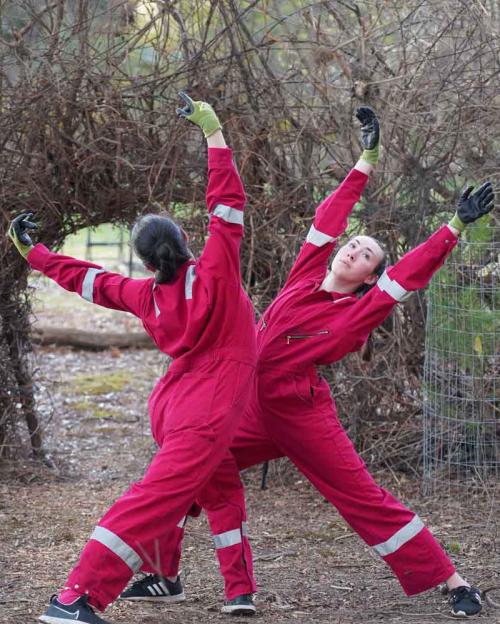Faculty and students who have projects focused on the rural humanities can apply for grants through Cornell’s Society for the Humanities in the College of Arts and Sciences.
Cornell faculty from any discipline can apply for up to $10,000 in support of public-facing research humanities projects and/or engaged community humanities initiatives on rural New York State issues. And faculty, graduate students and undergraduate students can also apply for rural humanities microgrants of up to $1,000. A public-facing or engaged component is an essential part of a successful application. The funding comes from a grant from the Andrew W. Mellon Foundation.
Applications are accepted on a rolling basis through spring 2025. Information on how to apply is available on the Rural Humanities website.
The Rural Humanities Initiative uses humanities tools to approach, learn from, make visible and support the realities of rural America, particularly in Central-Western New York.
“Over the past four years, we have been proud to support impactful faculty and student collaborations with indigenous communities and Black farmers, gay campsites and our Latinx neighbors, the St. James AME Zion Church and community colleges, rural poetry initiatives and much more,” said Paul Fleming, the Taylor Family Director, Society for the Humanities, and the L. Sanford and Jo Mills Reis Professor of Humanities in the departments of comparative literature and German studies (A&S).
The initiative has supported faculty initiatives ranging from a project to design indigenous seed storage; a documentary on rural LGBT life; and the development of architectural designs for a new elderly center for the Onondaga Nation.
"I could not have made the short documentary ‘Campfire’ without the funding from the Rural Humanities," said Austin Bunn, associate professor of performing and media arts (A&S). "It encouraged me to look closer at our often-overlooked region, listen to untold stories of the people that live here and reflect them as powerfully as possible." The Rural Humanities grant even sponsored a screening event at Cinemapolis of three of Bunn's short documentaries about local LGBT life, called "Out Here."
Supporting student work
Students projects last year included storytelling in a local elementary school, a digital exhibition featuring illustrations of indigenous people in Ithaca’s gorges, an architectural model/artifact storage unit to explain Ithaca’s connection to the Underground Railroad and a theatrical wildflower garden.
“Of all my projects at Cornell, this was the most joyous, intimate, and rewarding outlet for personal expression,” Adam Shulman ’23 said of “Nature’s Play,” the project he completed with help from a rural humanities microgrant.
Shulman’s “garden-theatre” was part of his honors thesis in performing and media arts. He worked with Cornell Botanic Gardens to find an area in Palmer Woods near Cornell’s North Campus and set to work, sculpting shelters from uprooted non-native plants and planting several saplings of pollinator friendly and berry-bearing native trees and wildflowers. He used the microgrant to buy seeds, saplings, protective fencing, solar powered lights and other materials.
“Several times a week, I hiked up the hill to aggressively uproot species with a weed wrench, clippers and saw borrowed from the Botanic Gardens,” Shulman said. “At times, the act of plant removal felt like waging a war against an oppressive colonial tumor: yet it was impossible not to feel guilty ripping out plants by hand that had simply followed their inherited instincts to grow.”
As he transformed the space physically, he also was inspired by the wandering plants to devise actions and dances that became part of a series of public performances in the space in April 2023.
“The most gratifying reward was when visitors hung around long after the planned performance concluded, enjoying the outdoors until darkness fell,” he said. “To make art that gets people outside allows the ultimate sensory freedom.”
Architecture graduate students Zachary Sherrod M.S. ’23 and Chi-Chia Tsao M.S. ’23 also received a Rural Humanities microgrant for their project, which culminated in an exhibition model of St. James AME Zion Church that they presented in the spring.
The project is in support of the Underground Railroad Research Project, an initiative led by Professor Emeritus Gerard Aching (A&S). One focus of that project was archeological digs at the church in 2021 and 2022, which included a multidisciplinary team of Cornell students and faculty and local schoolchildren. The groups uncovered artifacts and shed light on the church’s history and role in the Underground Railroad.
Tsao’s and Sherrod’s model, a replica of the historic church, was made of maple plywood and basswood and includes drawers in the sides that hold artifacts from the archaeological dig and important documents.
“Our proposal sought to integrate findings from the archaeological digs and the ever-growing historical archive of St. James into an educational medium that could support the storytelling capacity of Pastor Rev. Terrance King and the St. James Congregation,” Tsao said. “We tried to integrate all the artifacts and stories we learned about into the model and sought to relate them to the real parts of the church. For example, the removable covers next to the model of the church represent the real excavation sites.”
The model was created in pieces so that it can be easily transported and shared, Sherrod said, and it’s has been used by the church on numerous occasions.
“It served as a focal point for (the church historian’s) tours of the church during the Juneteenth celebration at St. James,” he said. “And in October, the model was transported to Hotel Ithaca to be put on prominent display at the 190th Anniversary Gala for St. James. We've since heard that the model initiated discussions and raised people’s interests. I believe that’s the essence of this project.”
Find more information on faculty and student projects on the Rural Humanities Initiative website.






